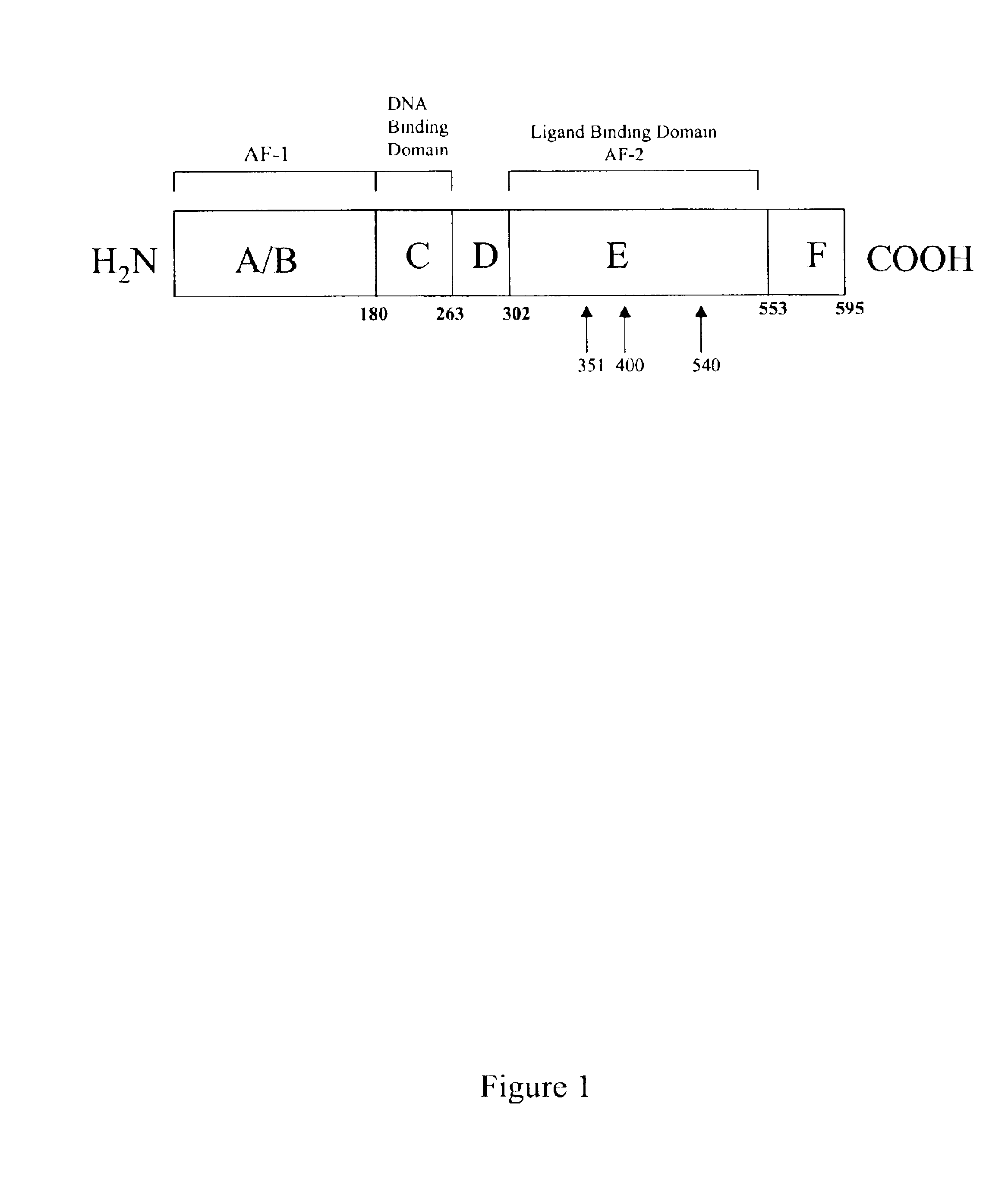1-adamantyl chalcones for the treatment of proliferative disorders
a proliferative disorder and chalcone technology, applied in the field of new drugs, can solve the problems of limited success of breast cancer treatment regimens, relapse of significant fraction of patients with early stage breast cancer, and inability to significantly improve the overall survival of patients with metastatic breast cancer
- Summary
- Abstract
- Description
- Claims
- Application Information
AI Technical Summary
Problems solved by technology
Method used
Image
Examples
example 1
Series I compounds were chalcone like-compounds where the A ring has been replaced by the adamantyl moiety. Various concentrations of these compounds were added to cancer cell lines and biological activity was measured as detailed in the experimental section.
Series I compounds demonstrated limited activity on the viability of MCF-7 cell, with the exception of 43f which exhibited a pronounced effect on cell viability at concentrations greater than 10−5 M. At these concentrations, 43f decreased cell viability 20 percent. These series of compounds produced similar effects on MD-MBA435 cells. However, 43f altered cell viability only at much higher concentrations than required for MCF-7 cells.
example 2
Series II compounds are chalcone like-compounds with a modification on the A ring and the B region, where the A ring has been replaced by the adamantyl moiety and the addition of a double bond to the B region. Various concentrations of these compounds were added to cancer cell lines and biological activity was measured as detailed in the experimental section.
Series II compounds demonstrated little activity in altering the viability of MCF-7 cells. 45a produced a small attenuation in the viability of these cells, while other members of these series were in effective.
example 3
Series III compounds are chalcone like-compounds where the A ring has been replaced by the adamantyl moiety, and the C ring replaced by a heterocyclic group. A dose response analysis was performed for these compounds to determine their cytotoxic properties as specified in the experimental section.
Compounds, (47a-e), were found to show significant anti-cancer activity against the MCF-7 cell lines. The LC50 values for series III (50 μM, 40 μM, 50 μM, 5 μM, and 0.5 μM respectively) were consistently lower than the LC50 values of known anti-breast cancer agents: Tamoxifen, Doxyrubicin, and Genestein, indicating higher potency. As demonstrated herein, the compounds in series III were consistently more effective at lower concentrations (<10 μM) than the known anti-cancer agents with compounds 47-c and 47-e showing the greatest efficacy. Three compounds (47a-c) in series III demonstrated significant anti-cancer activity against MDA-MB435 cells, with LC50 values of 1 μM, 5 μM, and 50 μ...
PUM
 Login to View More
Login to View More Abstract
Description
Claims
Application Information
 Login to View More
Login to View More - R&D
- Intellectual Property
- Life Sciences
- Materials
- Tech Scout
- Unparalleled Data Quality
- Higher Quality Content
- 60% Fewer Hallucinations
Browse by: Latest US Patents, China's latest patents, Technical Efficacy Thesaurus, Application Domain, Technology Topic, Popular Technical Reports.
© 2025 PatSnap. All rights reserved.Legal|Privacy policy|Modern Slavery Act Transparency Statement|Sitemap|About US| Contact US: help@patsnap.com



